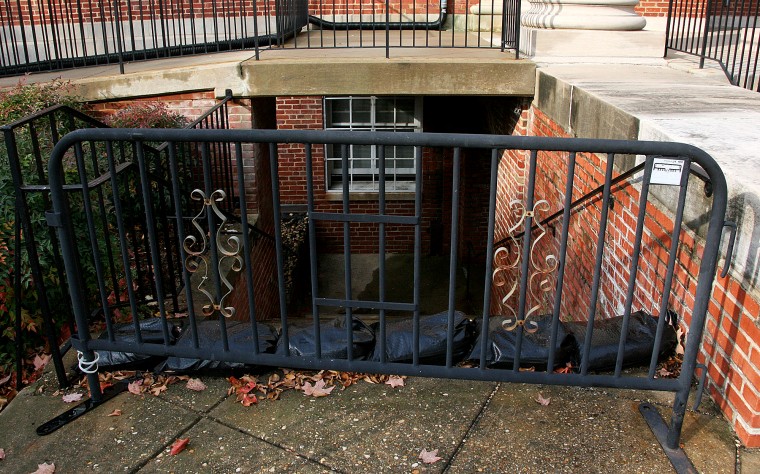
A barricade blocks a side entrance to Skinner Hall, where old bricks along the building’s walls have begun to deteriorate.
After decades of being short-changed by the university and state, Facilities Management has found itself playing a seemingly neverending game of catch-up — the department can only afford to fix things as they break but can’t keep them from failing in the first place, officials said.
And with another round of budget cuts expected to follow a recent decline in projected state revenue, keeping up with the university’s aging infrastructure will be even more of a challenge, Vice President for Administrative Affairs Ann Wylie said.
“The buildings have not been maintained in a way where we have been able to renew, so we’ve been in the ‘fix it’ mode rather than updating on a regular schedule,” Wylie said. “We have $650 million of deferred maintenance building — mechanical, electrical, plumbing systems on the campus that should have been replaced and maintained. That serious problem means that we are only able to deal with the crises because they have been improperly maintained.”
In the last eight to 10 years, the university balanced its budget by deferring maintenance, officials said, but there isn’t enough state funding to pick up the slack as needs become more desperate.
“The university has a serious problem with Facilities,” Wylie said. “[These projects] come from many years of not putting aside appropriate funding for facilities renewal. A business or any place that operates appropriately should put aside 2 percent for upkeep and maintenance and for many years going back — 30, 40 years — the university was unable to do that.”
Facilities projects are being starved of funds statewide, said Matt Klein, Capital Budget manager at the state Department of Legislative Services’ Office of Policy Analysis.
“The entire state has a huge backlog of facilities maintenance projects because they’re not the kind of projects people like to fund, and unfortunately the state is woefully behind,” Klein said. “As these systems fail, these aren’t the kinds of things you can plan. You have to fund them using whatever you can find.”
The state has a $120 million backlog of highly desired new projects, but those projects’ funding has been regularly diverted to unexpected repairs, he said.
“You have a domino effect: If they’re continuously having to handle emergency projects, that’s taking operating money away and the projects they anticipated doing would be deferred,” Klein said. “The university’s got a very old infrastructure, they’re constantly behind, and they’re seeking additional resources particularly for this under-the-ground stuff that’s going on.”
Jack Baker, the university’s director for operations and maintenance, said although officials are used to handling hundreds of projects at a time, Facilities Management is dealing with more projects than in past years — and at a time when it doesn’t have the funding to hire as many employees as it would like to keep things working.
The university has not yet had the problem of not having the money for an emergency repair — nearly $3 million worth of projects this semester alone — and Baker said he remains optimistic his department will be able to continue handling the situation.
“There are a lot of people looking out for the best interest of the campus, and it’s easy to say what needs to be done, but it’s much harder to actually get it done,” Baker said. “It would be great if we could do everything at once, but that’s not reality.”
abutaleb at umdbk dot com



